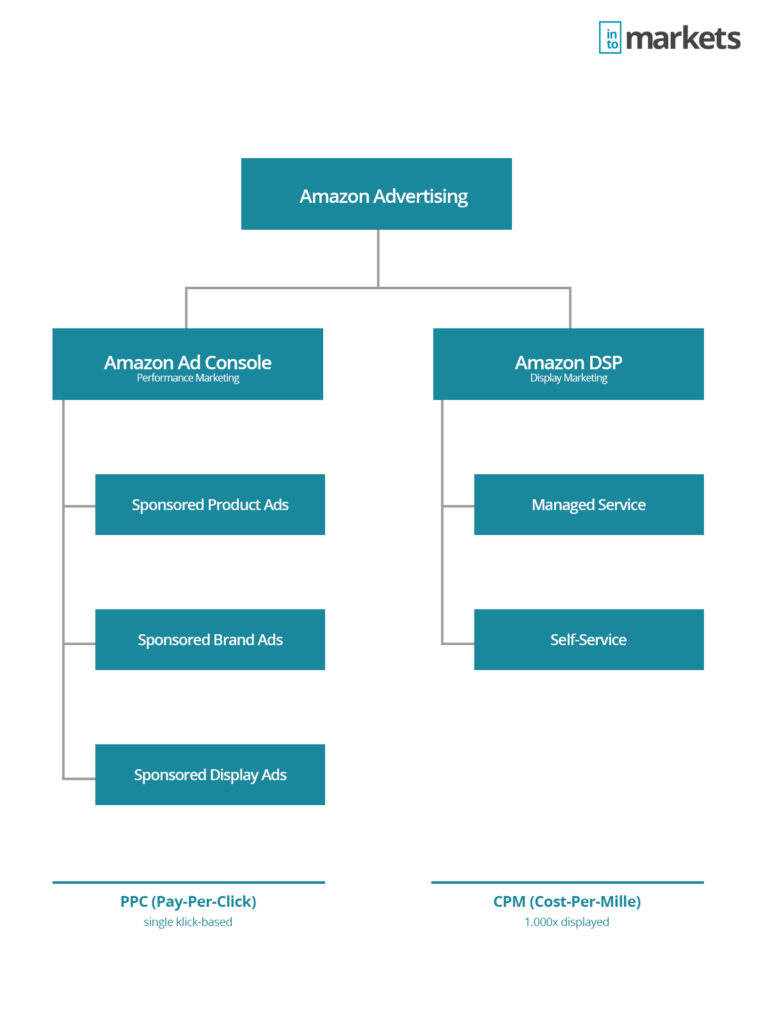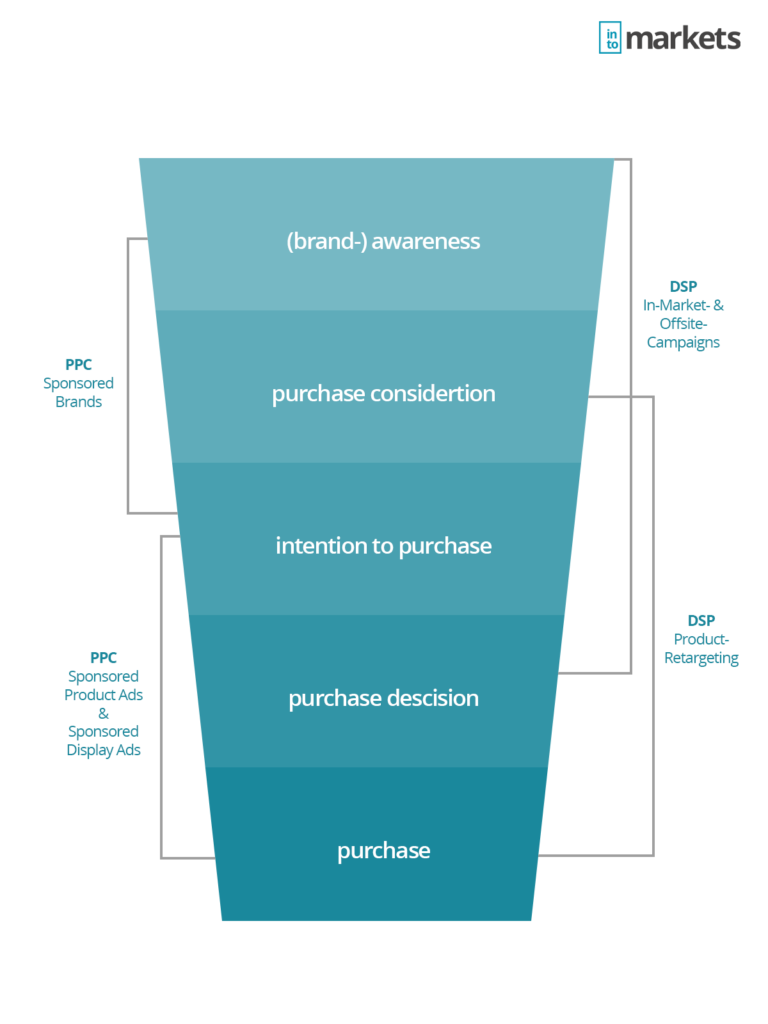Amazon DSP

Amazon’s DSP focuses on display and multimedia campaigns on the marketplace website as well as display-networks outside of Amazon’s platform. The possibility to place advertisements outside of Amazon is the most significant difference to the “classic” Amazon Advertising in the area of Performance Marketing. Furthermore, the Demand Side Platform (DSP) differs from the Amazon Advertising Console in two essential points. Advertisements in the Advertising Console are billed according to the Pay per Click (PPC) model. There are no costs for the advertiser until the customer has clicked on the ad. Amazon DSP is billed according to the Cost per Mille principle “CPM” (also called “cost per thousand advertising impressions”). Costs here, are incurred per 1,000 ads/impressions, independent of clicks on the ads. These different billing models require different approaches to budgeting and campaign planning.
Playout of the Advertising Campaigns with the Amazon DSP

Display on Amazon pages and apps (e.g. Amazon.com or Amazon App)

Amazon operated websites (e.g. IMDb + Audible) ) and external websites

Third party apps through the integration of Amazon DSP with top Open Exchanges
Restructuring Amazon Marketing Services and Amazon Advertising Platform
Before the restructuring of Amazon Marketing Services (AMS) and the Amazon Advertising Platform (AAP), these advertising opportunities were managed under Amazon Media Group (AMG). As a result of the change from AMG to Amazon Advertising, the advertising activities were also renamed. The Advertising Console manages Amazon Marketing Services, and the Amazon DSP consoles control the Amazon Advertising Platform. All advertising activities can now be managed centrally through Amazon Advertising Website.
The use of Amazon DSP is possible for Amazon sellers, as well as for companies that do not offer their products on the platform. With Amazon DSP, sellers and vendors can extend their reach far beyond the possibilities of sponsored product campaigns and companies that do not offer products on Amazon benefit from the unique USP “Amazon Audiences” or Amazon 1st Party Audience Data.
“Amazon Audiences” are Amazon customers (Amazon accounts), defined by their purchase, search and activity history of accurate and detailed information. This information is, of course, prepared in compliance with DSGVO (GDPR). Thus, advertising companies do not take any risks regarding data protection violations.
Amazon DSP Managed und Self Service
Amazon distinguishes between two different services regarding the use of the advertising option, one that is managed by Amazon and the Self-Service option. The first option is an Amazon fully managed service; here, Amazon employees take over the complete creation and control over the company’s DSP campaigns. The service can be booked directly from Amazon, starting with an advertising budget of 10,000 EUR per month, Amazon then commissions a fee based on a percentage of the advertising budget that has been implemented.
With the Company Self-Service use of DSP, companies and agencies can create and control the campaigns themselves. Amazon reserves the right to assign the self-service accounts according to strict guidelines. Only a few, big companies get access to a self-service account. Often this account is preceded by a successful cooperation with Amazon’s Managed Service. Another possibility to use Amazon DSP is the Managed Service of agencies. For this, the company does not require a minimum budget. However, 5,000 EUR per month is recommended to generate enough impressions and consequently generate a relevant reach.
Full Amazon Advertising Funnel
By using the Amazon DSP, the entire Amazon Advertising Funnel can be played. Merchants who only focus on using Amazon Marketing Services via the Advertising Console can only reach potential buyers on the marketplace when searching for products. Often the customer already has a purchase intention and is already in the phase of the product search. By using Amazon DSP, the customer can be accompanied by the entire customer journey.
Essential basic requirements for the successful use of the entire Amazon Advertising Funnel are precisely defined (company) goals and knowledge of the respective product life cycles. Different indicators for measuring success apply to the individual phases of the customer journey. Does the customer know my product, or is this an innovation that still needs to be understood and recognized.
Awareness & Consideration
Relevant KPIs for the goal of brand awareness can include the impressions and reach of unique users. In this phase of the sales funnel, the primary goal is not to achieve profitable sales, but to bring the product or brand into the customer’s consciousness. The detailed page views play a particularly important role in this phase of considering a purchase. Has the customer considered and clicked on a product? In this case, the target group is often broader during the campaign management via DSP than during the purchase intention.
Purchase Intention & Purchase Decision
Mainly (but not only) during the purchasing stage, Amazons First-Party-Data (Amazon Audiences) can be used and, with the help of the DSP, the product will show to people who have looked at similar products in the last 30 days but did not buy them. The detail page views remain a KPI (Key Performance Indicators) for a successful strategy.
Data such as “added to shopping cart” or “added to wish list” play an essential role in the purchase decision stage. When the purchase is completed, the ROAS (Return on Advertising Spend) comes to the front.
Conversion & Purchase Completion
Companies that offer products on Amazon can particularly benefit from the combination of the Advertising Console and Amazon DSP. Here, the use of retargeting campaigns via DSP should be emphasized. Customers who were already in the buying decision phase and have not converted can continue to be advertised on and off Amazon with the help of DSP retargeting. If the goal is a profitable play out of the advertising campaigns, DSP retargeting campaigns must always be considered.
As a rule of thumb, the higher the funnel, the more expensive it is to convert an interested party into a buyer.
Advantages of the Amazon Demand Side Platform
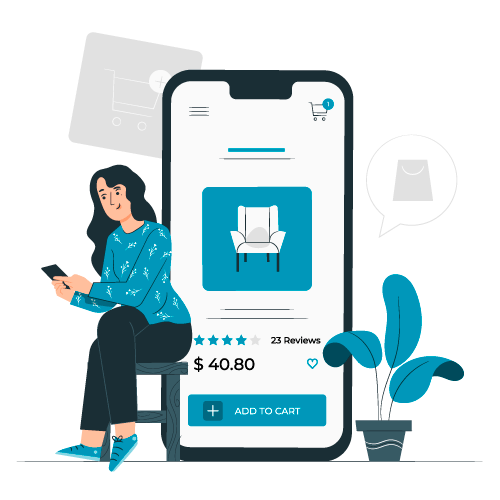
With traditional advertisement campaigns, the objective is often to display advertising based on presumed consumer interests. If, for example, a user searches a website for information about modern interior design, this page is used for advertising matching pieces of furniture. By using Amazon’s First-Party Data (Amazon Audiences), users who have looked at furniture products on Amazon but have not yet bought them can be targeted, regardless of where the user is on the Internet. For example, if this customer buys a chair, it will be automatically excluded from further advertising campaigns.
Also, it is possible to display other similar products to the potential buyer (e.g. a matching table), as through the sale it is known that he/she has already bought a piece of furniture. Besides, the algorithm learns from user behaviour which displays types of work on which advertising spaces. These findings can be evaluated with the help of reports, and further, unrecognized target groups can be identified and advertised.
Amazon DSP: Targeting
Another advantage of Amazon DSP is the possibility of cross-device targeting. Depending on the product category, the prospective customer uses different end devices to make a purchase. Using Amazons DSP, it is possible to display ads on different devices. In the process of the customers’ journey, some shoppers change the end device and close the transaction there.
Amazon DSP: Algorithm
Amazons DSP’s algorithm analyses in real-time, whether existing advertising space matches the campaign target. In doing so, the seller automatically verifies whether ads (impressions) are purchased or not. Other providers already know the Real-Time-Bidding (RTB) approach. This automatic comparison of advertising spaces and campaign targets enables the algorithm to optimize the display.
Amazon DSP: Brand Safety
Brand Safety and Ad-Fraud-Prevention also play a crucial role at Amazon. Amazon uses a combination of manual checks and partnerships with leading technology companies in order to check the impressions before and after they are released. The advertiser only pays for impressions that pass this checking procedure.
Targeting Possibilities with Amazon DSP
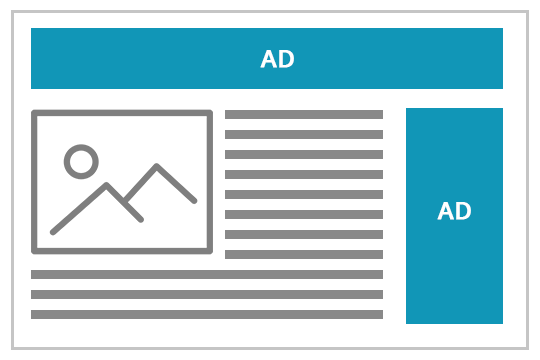 Amazon DSP Standard Display Ads (SDAs)
Amazon DSP Standard Display Ads (SDAs)
When using standard display ads, the ads can be individually designed in different sizes. It is possible to work with creative elements and corporate identity. Standard Display Ads can be a static image or an animation. Other format sizes and landing page options apply for display in apps. Popular formats for these display campaigns are “Skyscraper” (120 x 600 pixels), “Banner” (468 x 60 pixels), “Leaderboard” (728 x 90 pixels), “Square” (250 x 250 pixels), “Half-page Ad” (300 x 600 pixels), “Rectangle” (336 x 280 pixels) or “Billboard” (970 x 250 pixels).
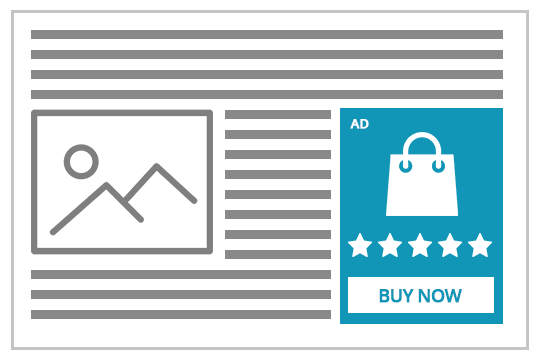 Amazon DSP Dynamic eCommerce Ads (DEAs)
Amazon DSP Dynamic eCommerce Ads (DEAs)
The Dynamic eCommerce Ads are designed automatically (individually) and are always based on an ASIN. Depending on the advertising space and KPI, the display format is automatically adjusted. If a customer attaches importance to product reviews, the ad is played out with a rating. Amazon compares the goals of the campaign with the customer’s preferences in the ad. The name of these ads is therefore based on this dynamic structure and adaptation of the advertising banners.
By the way, the corresponding product on Amazon Marketplace is always linked here.
 Amazon DSP Videos Ads
Amazon DSP Videos Ads
(VAs)
The video ads are displayed on mobile, desktop and apps. There are three different advertising formats: In-Stream Video Ads, Out-Stream Video Ads and In-App Interstitial Video Ads. In-Stream Video Ads are usually embedded as pre-rolls in other videos. Out-Stream Video Ads stand alone as video and are not linked to additional content. In-App Interstitial Video Ads are, similar to Out-Stream Video Ads, standalone ad videos. However, in-app videos cover up the actual content and are therefore often perceived as “annoying” by users.

To ensure the maximum probability for ads to reach their intended audience, advertisers should provide a variety of banner formats. As an Amazon agency, our creative team can gladly support you in this process
FAQ: Frequently asked questions about Amazon DSP
Basically, anyone can use the Amazon DSP. Even companies that do not offer products on Amazon can use this service. However, access to the advertising platform is necessary, which is currently only granted to a few partners
There are two ways to access the Amazon DSP. The first possibility is to use Amazon´s “Managed Service”. Here Amazon employees’ control and manage the advertising campaigns. The second possibility is “self-service access”, where companies themselves or an agency control the campaigns.
A minimum booking volume of 10,000 Euro per month is required for the assignment of the Amazon Advertising Team. Amazon currently charges a fee of 15% plus a “platform fee” of 10%.
Amazon is very selective when it comes to granting self-service access. Companies whose focus is not on programmatic Advertising only, rarely get access to the demand-side platform. This access is often preceded by long and fruitful cooperation in managed service. Some external agencies (like intomarkets) have DSP access and can provide the service.
There is no minimum budget required when using the self-service access. As an agency, we offer our managed service starting from 3,000 EUR per month. However, a minimum of 5,000 EUR per month has been established as a guideline to achieve meaningful results. Depending on the product portfolio and the goals, we recommend a larger budget and a duration of at least three months.
The billing in Programmatic Advertising is based on CPM. The fee is charged per 1,000 insertions (ads). This is a significant difference to the cost-per-click model in performance marketing. In this case, costs are only incurred when the ads are clicked on, regardless of the ads displayed.
The duration of the campaign depends on the objectives pursued and the products to be promoted. A basic understanding of Programmatic Advertising is essential. The focus should be less on the duration and more on the generated reach (impressions) of a campaign.
Amazon DSP can be used to pursue different goals (sales, branding, product launch). 1st Party Audience-Data from Amazon is the “golden treasure”, which can be activated whenever you want to control a campaign precisely. This particular feature sets Amazon apart from other competitors and makes the Amazon DSP unique





